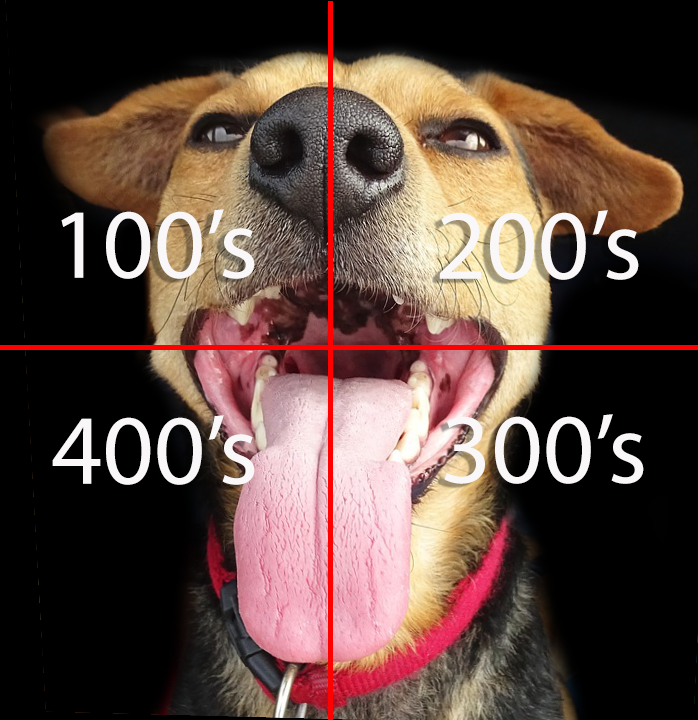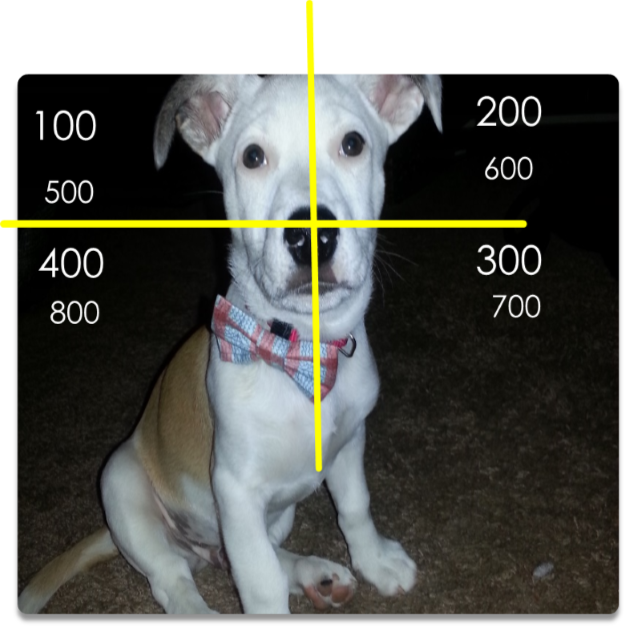Skill Group: Clinical Skills
Modified Triadan System and Dental Formulas
Before You Start …
Here are some terms to know:
- Modified Triadan System
- A system for numbering each tooth in the mouth.
- Maxilla
- Contains the upper teeth – maxillary teeth, ie maxillary canine.
- Mandible
- Contains the lower teeth – mandibular teeth, ie mandibular canine.
Introduction
The use of the modified Triadan system has become common place in veterinary medicine. Most hospitals utilized a dental charting system as part of a patient’s permanent medical record. These charts use the modified Triadan system to identify abnormalities and subsequent treatments. Understanding the modified Triadan system helps to streamline communication with our clients and colleagues.
You previously learned instrumentation used in veterinary dentistry, and now you will learn how to identify each tooth so you can chart it, know what type of tooth it is and its structure.
Learning Outcomes
By the end of this lesson, you should be able to:
- Identify the instruments used in dental charting.
- Describe the functions of the instruments used in dental charting.
- List the instruments in a periodontal pack, as well as those in a surgical pack.
The Modified Triadan System
Each tooth is assigned a 3-digit number:
- The first number identifies which quadrant the tooth is in;
- The second and third identify the location of the tooth, starting from front (rostral) to back (caudal) of the mouth.
Numbering Quadrants
| Quadrant Number | Quadrant |
|---|---|
| 100 | Right upper/maxillary |
| 200 | Left upper/maxillary |
| 300 | Left lower/mandibular |
| 400 | Right lower/mandibular |

Practice Time!
If there are deciduous teeth present, the numbering system is the same with the quadrants continuing to progress in number.
| Quadrant Number | Quadrant |
|---|---|
| 500 | Deciduous right upper/maxillary |
| 600 | Deciduous left upper/maxillary |
| 700 | Deciduous left lower/mandibular |
| 800 | Deciduous right lower/mandibular |

Practice Time!
It is sometimes useful to orient yourself to the quadrant by knowing how to number your own quadrants. Starting in the upper right side, move counterclockwise to form a C when numbering your own quadrants. When looking directly at your patient when both are standing, start on the patient’s right side (your left side) and move clockwise to number the quadrants (reverse C). Understanding this perspective will help to label the quadrant no matter the orientation of your patient.
Numbering Teeth in Canines
| Tooth Number | Quadrant |
|---|---|
| 01, 02, 03 | Always incisors |
| 04 | Always canine |
| 05, 06, 07, 08 | Always premolars |
| 09, 10, 11 | Always molars |
Hint: While there are differences in some species, the following are always true:
- Tooth 04 is the canine tooth.
- Tooth 09 is the first molar.
It is easier to chart a specific patients oral and dental anatomy if we understand their dental formula, as well as specific nuances for each species.
Canine Dental Formula
Dogs have 42 teeth. The dental formula for dogs is as follows:
2 (I3/I3, C1/C1, P4/P4, M2/M3).
Let’s break down this formula to help us understand how we calculate the teeth based on this formula.
First, the symbols:
- The I stands for incisors. Incisors are used to cut, scoop, pick at or up, and groom.
- The C stands for the canine tooth. Canines are used to slash and tear or pierce and hold prey.
- The P stands for premolars, which are used to hold and carry food, breaking it down into smaller pieces.
- The M stands for molars, which are used to grind food.
Then, the numbers:
- The numerator (top number) is equal to the number of teeth on one side of the mouth in the maxilla (upper arcade).
- The denominator (lower number) is equal to the number of teeth on one side of the mouth in the mandible (lower arcade).
- The 2 at the front of the equation means we can arrive at the total number of teeth for this species by multiplying the number of teeth we calculate in this equation by 2 – there are 2 sides of the mouth (right and left).
Practice Time!
Feline Dental Formula
Cats have 30 teeth. The dental formula for cats is as follows:
2 (I3/I3, C1/C1, P3/P2, M1/M1).
In comparison to dogs, cats are missing the following 12 teeth:
- First premolar (05) in all quadrants – 4 total;
- Mandibular (lower) 2nd premolar (06) – 2 total;
- Maxillary (upper) 2nd molar (10) – 2 total;
- Mandibular (lower) 2nd and 3rd molars (10, 11) – 4 total.
When we put our knowledge of how to number teeth with the information regarding dental formulas, we can more easily identify a specific tooth in a canine or feline patient’s mouth.
For example, 05 and 06 premolars don’t exist in a feline patient’s right lower/mandibular quadrant (400), neither do 10 and 11 molars, we would skip them when we count:
- Incisors – 401, 402, 403
- Canine – 404
- Premolars – 405, 406, 407, 408
- Molars – 409
Wrapping Up
In this lesson, we learned the quadrants of the mouth, how each tooth in a dog or cat’s mouth is numbered, and how to combine our knowledge of dental formulas to help identify a specific tooth in a dog or cat’s mouth. This is extremely important for notating pathology of a certain tooth or region in a patient’s mouth.
In our next lesson, we will combine this knowledge with our knowledge of dental anatomy and directional terminology to identify the location of pathology within our patient’s mouth
Before Moving On …
Use the self-check activity below to practice charting a canine mouth using the Modified Triadan System.
OSU Students: In the skills center, you will have additional opportunities to practice counting teeth and identifying specific teeth using the Magnetic Board Activity (“Magna Charta”).